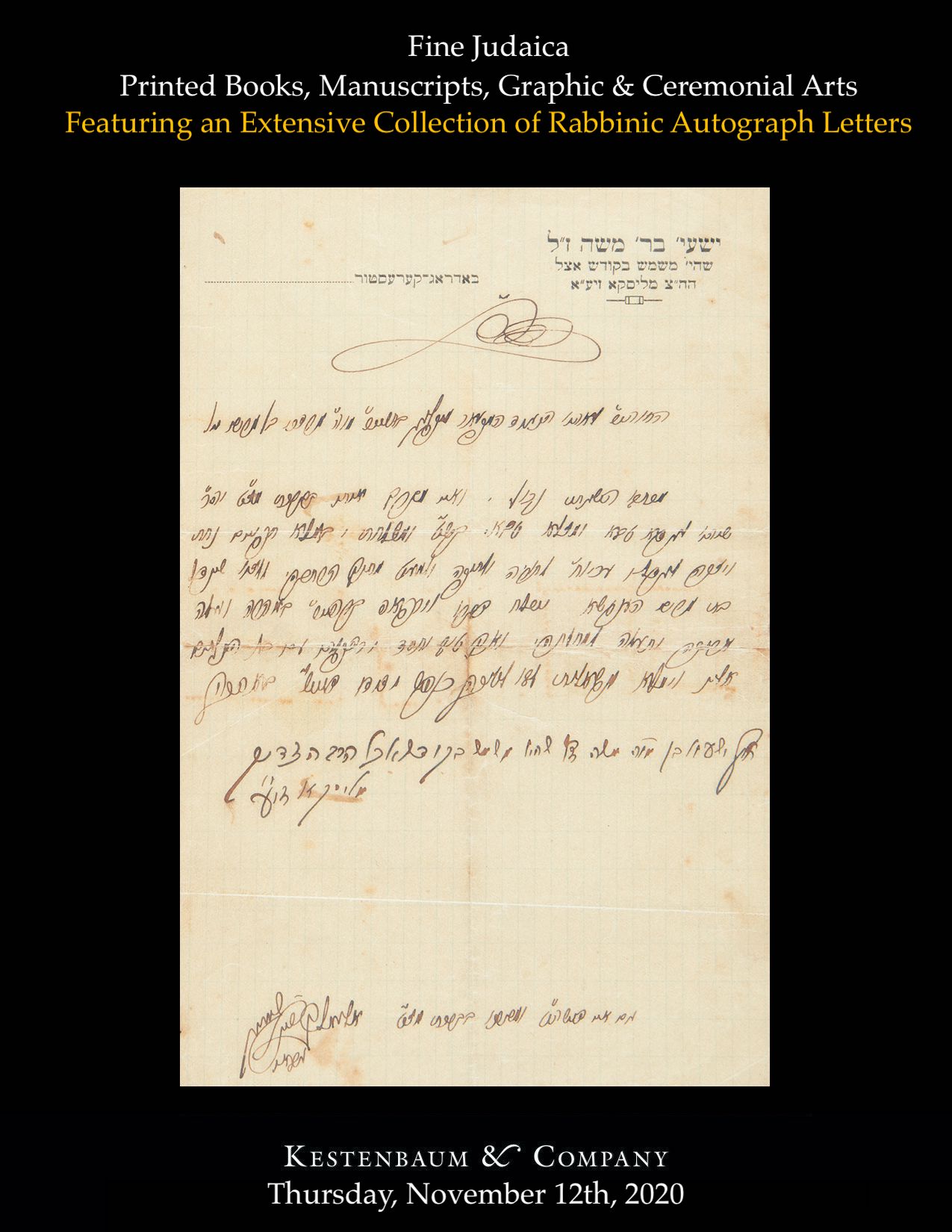Sepher Takanoth of the Chevra Kadishah of Bamberg.

Auction 91 |
Thursday, November 12th,
2020 at 1:00pm
Fine Judaica: Printed Books, Manuscripts, Graphic & Ceremonial Arts Featuring an Extensive Collection of Rabbinic Autograph Letters.
Lot 4
(GERMANY).
Sepher Takanoth of the Chevra Kadishah of Bamberg.
Bamberg: 1778-91
Est: $7,000 - $10,000
PRICE REALIZED $7,500
This Pinkas records the statutes of the Bamberg Burial Society. The regulations ensured decorum and close bonds among members. For example, the first regulation states that gentlemen must gather each Sabbath and Festival day one hour before Mincha to study Torah: Pirkei Avoth in the summer, and in winter, the Haftarah with commentary.
Includes notations and signature of Landesrabbiner Juda Katz (1770-1788) and resolutions to make certain changes, confirmed and signed by Landesrabbiner Löb Berlin (1789-1794). On an individually attached sheet are the minutes containing a decision to employ a teacher to give daily shiur. At the end, some notes (Gedächts-Chronik) of a former book owner.
The <<beautifully executed title page>> features a large crown adorning an oval with the title and subtitle of the Pinkas, with a young man and a lion alongside. Below are animals at pasture with a Hebrew motto allusive of Jeremiah 50:17 “A reward for assembling/ the scattered sheep, gathering.”
See A.A. Eckstein, Geschichte der Juden im ehemaligen Fürstbistum Bamberg, bearbeitet auf Grund von Archivalien, nebst urkundlichen Beilagen (Bamberg, 1898) pp. 95-97; and his article in Monatsschrift für Geschichte und Wissenschaft des Judentums (1924) pp. 307-16. The title page of this manuscript was reproduced in the Bayerische Israelitische Gemeindezeitung (1928) p. 163. See also R. Hanemann (Ed.) Jüdisches in Bamberg: Schriften der Museen der Stadt Bamberg 51. (Petersberg: Imhof, 2013).
Rabbi Adolf Abraham Eckstein was a representative of liberal Reform Judaism in Germany. As an historian he wrote numerous monographs and essays on the history of the Jews in Franconia (see https://de.wikipedia.org/wiki/Adolf_Eckstein).
There had been a Jewish presence in Bamberg since the Middle Ages, with alternating phases of settlement and persecution (First Crusade (1096), Rintfleisch massacre (1298), pogroms after the Black Death (1348), various mob attacks (between the 14th and 17th century). In 1633, the Jewish community in Bamberg numbered ten families, whose right of residence was recognized in 1644. The Jewish community in Bamberg numbered about 1,270 in 1880 (4.3% of the total population). The city of Bamberg is renowned for a medieval cathedral whose chief ceremonial entryway (Fürstenportal) shows a lavish group of sculptures representing the Last Judgment. Flanking this ensemble are monumental sculpted female personifications of the Church (Ecclesia) and Synagogue (Synagoga).
